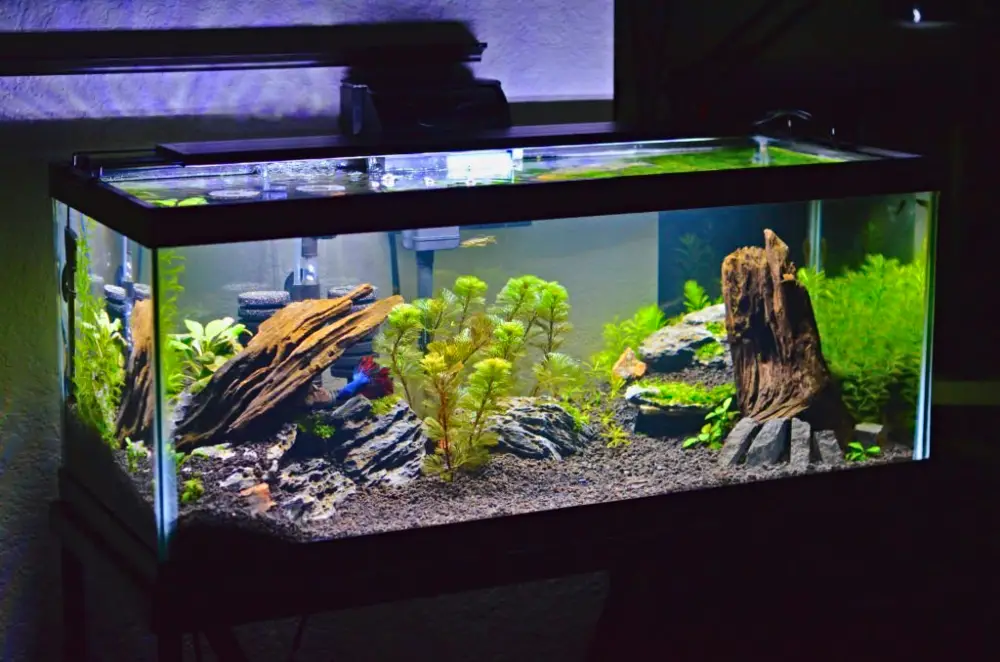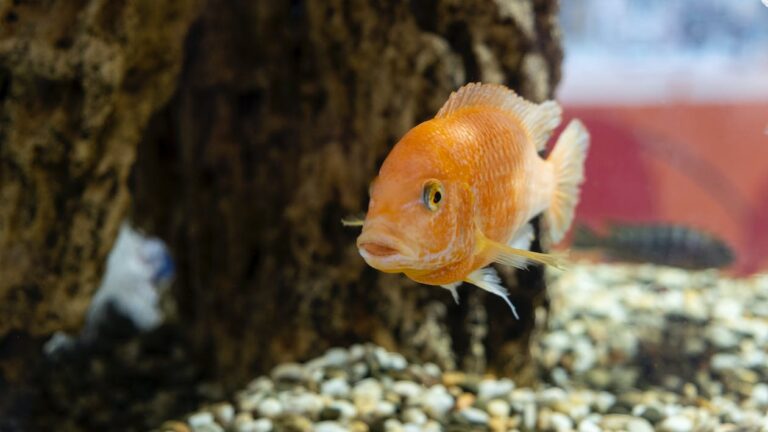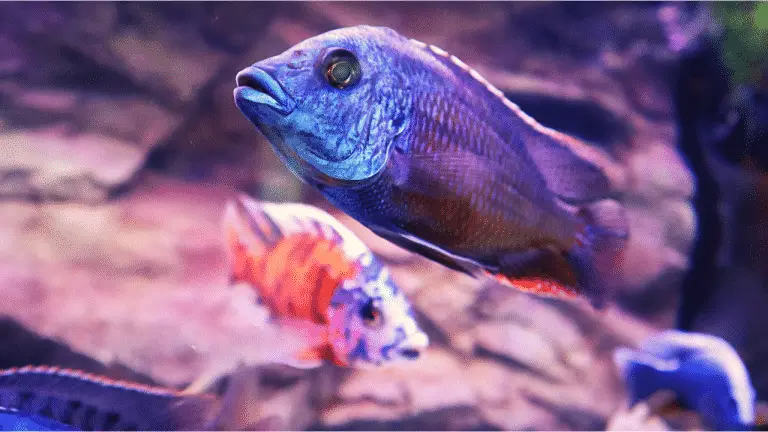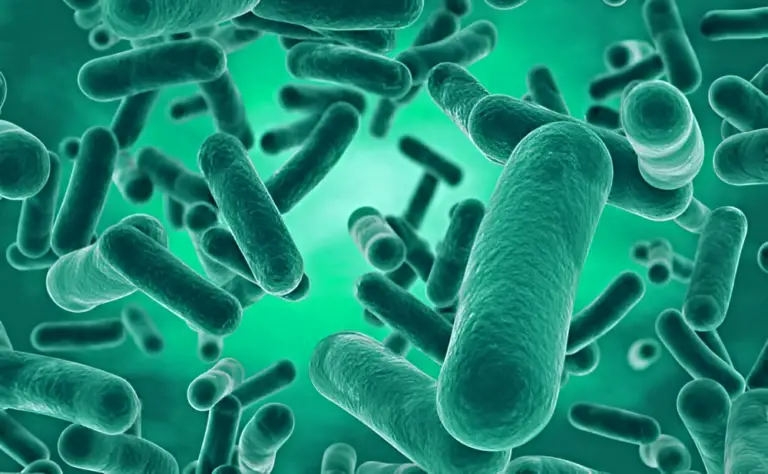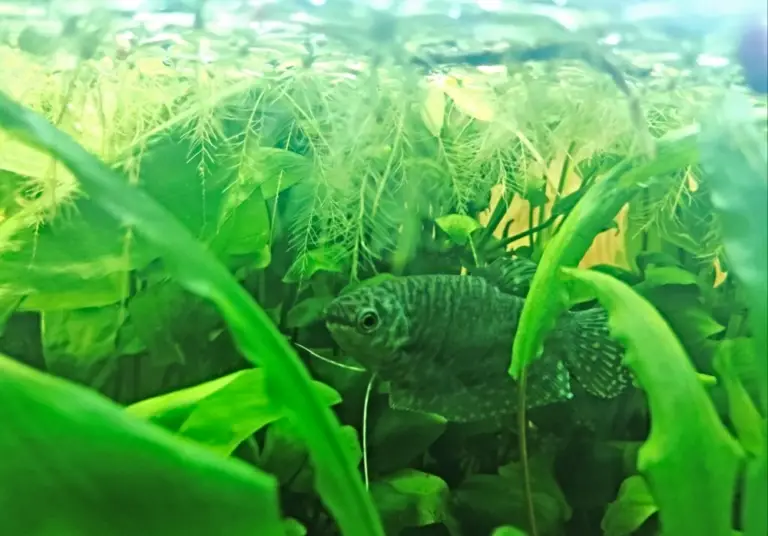From Cycling to Thriving: 6 Steps for Maximizing Your Post-Cycle Aquarium
Congratulations! Your aquarium has successfully completed its cycling journey. You’ve taken a crucial step in establishing a healthy and thriving aquatic environment. Aquarium cycling, the process of establishing beneficial bacteria, is essential for creating a balanced ecosystem for your fish.
Now that the cycling is complete, it’s time to focus on what comes next — maximizing your post-cycle aquarium. In this blog, we’ll explore the steps to maintain a healthy aquarium ecosystem, ensuring your fish thrive in their new home. Get ready to dive into the world of creating a thriving aquarium!
6 Steps for Maximizing Your Post-Cycle Aquarium
Now that your aquarium has completed its cycling process, it’s time to focus on maximizing its potential. By following these six steps, you’ll ensure a healthy and thriving post-cycle aquarium. From water quality management to proper feeding and regular maintenance, we’ll cover everything you need to know to maintain a healthy aquarium ecosystem. Let’s dive into the details and make your post-cycle aquarium the best home for your fish.
1. Testing Water Parameters
Testing water parameters is a crucial step in maximizing the health of your post-cycle aquarium. Regularly monitoring the key parameters ensures a stable and thriving environment for your fish. Let’s explore the important tests and their significance:
- Ammonia: Ammonia is highly toxic to fish. Testing for ammonia levels helps you detect any potential spikes and take corrective measures promptly.
- Nitrite: Nitrite is another harmful substance that can be present during the cycling process. Testing for nitrite levels allows you to ensure they are at safe levels for your fish.
- Nitrate: Nitrate is a byproduct of the nitrogen cycle. Although less harmful, high nitrate levels can still be detrimental to fish health. Regular testing helps you maintain optimal levels.
- pH: pH measures the acidity or alkalinity of the water. Different fish species have specific pH preferences, so testing pH levels helps you ensure the water is within the appropriate range for your fish.
- Temperature: Temperature affects fish metabolism and overall health. Monitoring and maintaining a consistent temperature is crucial for the well-being of your aquatic pets.
Interpreting the test results is just as important as conducting the tests. Understanding safe ranges for each parameter and comparing the results to those ranges will guide you in making necessary adjustments. If any parameter is off balance, take steps to correct it, such as water changes or using appropriate water conditioners.
Regular testing of these parameters will help you maintain a healthy and thriving post-cycle aquarium, providing optimal conditions for your fish to flourish.
2. Water Changes and Maintenance
Regular water changes are vital for maintaining water quality and maximizing the health of your post-cycle aquarium. They help remove accumulated waste, toxins and excess nutrients, ensuring a clean and balanced environment for your fish. Here’s what you need to know:
- Frequency and volume: The frequency and volume of water changes depend on factors like tank size and stocking levels. As a general guideline, aim for a 20-30% water change every 1-2 weeks. However, larger tanks or heavily stocked tanks may require more frequent or larger volume changes.
- Proper water change procedures: To perform a water change, start by siphoning out the water using a gravel vacuum or siphon. Remove debris and uneaten food from the substrate. Then, replace the removed water with dechlorinated tap water or pre-treated aquarium water. Gradually add the fresh water to minimize stress on your fish.
- Water conditioners: When adding fresh water during a water change, it’s crucial to use a water conditioner. Water conditioners neutralize harmful substances like chlorine and chloramine present in tap water, making it safe for your fish.
During water changes, take the opportunity to inspect and clean the aquarium equipment, such as filters, heaters and decorations. Maintaining these components ensures their proper functioning and extends their lifespan.
By incorporating regular water changes and proper maintenance into your aquarium care routine, you’ll create a healthier and more vibrant environment for your fish to thrive.
3. Introducing Livestock
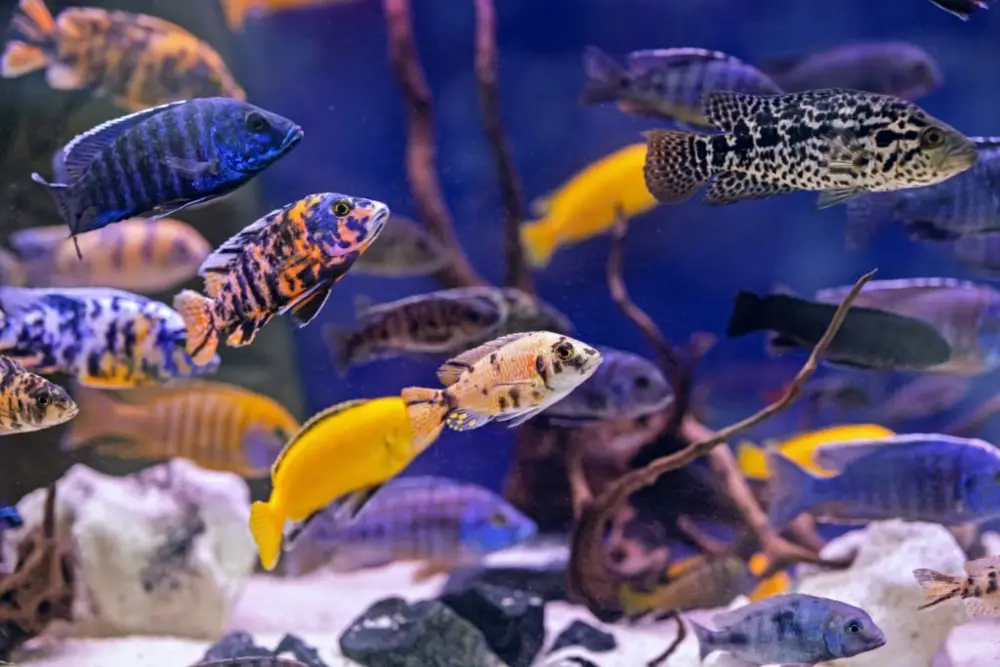
Ah, the moment you’ve been waiting for — introducing fish and other aquatic inhabitants to your post-cycle aquarium! It’s an exciting step that adds life and beauty to your underwater world. Here’s how to make it a success:
- Research and compatibility: Before bringing home any new fish, take the time to research their species and their compatibility with your existing tank inhabitants. Consider their adult size, temperament and water parameter requirements — if you have African cichlids, then read our complete guide — alternatively, we also cover Discus fish. Ensuring compatibility is key to maintaining a harmonious and thriving aquarium community.
- Acclimation process: When introducing new livestock, it’s essential to acclimate them gradually to their new environment. Float the sealed bag containing the fish in the aquarium for about 15-20 minutes to equalize the temperature. Then, open the bag and gradually add small amounts of tank water to it over the next 30 minutes. This process helps the fish adjust to the water chemistry and temperature differences.
- Minimizing stress: Minimizing stress during the acclimation process is crucial for the health and well-being of your new fish. Dim the lights and reduce noise levels in the room to create a calm environment. Additionally, ensure the tank has hiding places and suitable water conditions to make the new arrivals feel secure. We also recommend using Seachem Stress Guard to further help minimize stress levels.
- Observation and monitoring: After introducing the livestock, closely observe their behavior and monitor their health. Look for signs of stress, disease, or compatibility issues. If any concerns arise, take appropriate action promptly to maintain the overall health of your aquarium community.
Remember, adding new livestock to your post-cycle aquarium is an ongoing process. Be patient and introduce new fish gradually to maintain a balanced ecosystem. With proper research and acclimation, your aquarium will flourish with a diverse and vibrant array of aquatic life.
4. Feeding and Monitoring
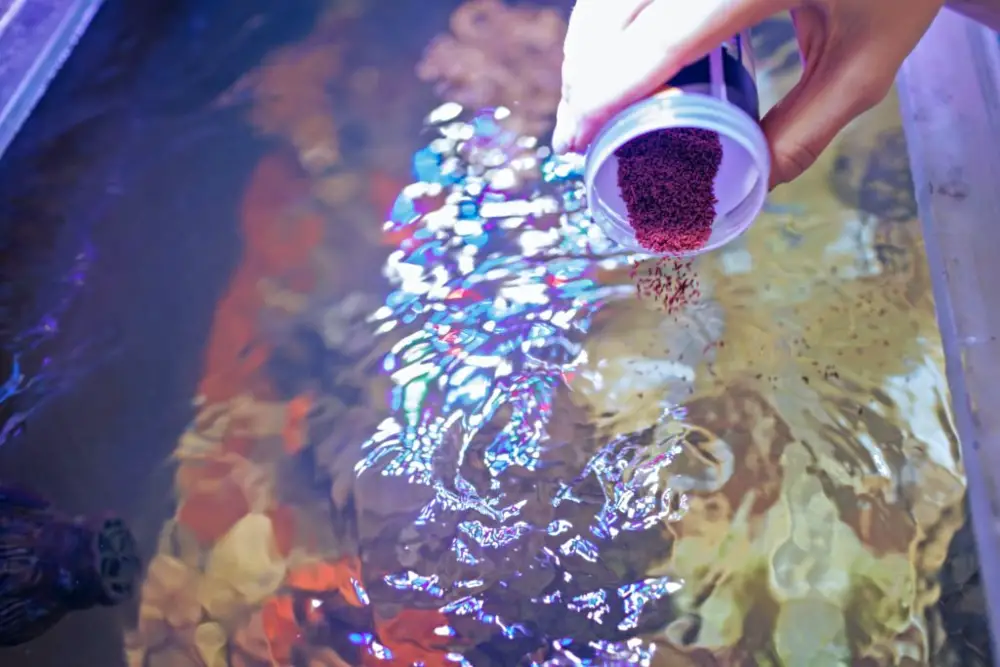
Now that your post-cycle aquarium is thriving with life, it’s essential to ensure your fish are getting the nourishment they need while maintaining a healthy and balanced ecosystem. Follow these feeding and monitoring tips to keep your aquatic friends happy and your tank in top shape:
- Species-specific feeding: Different fish species have different dietary requirements, so it’s crucial to research and provide the appropriate food for your underwater residents. Some fish are herbivores, others are carnivores and some are omnivores. Choose high-quality fish food that matches their nutritional needs to support their growth and overall well-being.
- Monitor behavior and appetite: Observing your fish’s behavior and appetite is a window into their health and happiness. Healthy fish should be active, have a good appetite and exhibit vibrant colors. If you notice any changes in behavior, such as reduced activity or loss of appetite, it could indicate a potential health issue. Pay attention to such signs and take appropriate action if necessary.
- Adjust feeding amounts: Overfeeding can lead to poor water quality and health problems, so it’s important to feed your fish the right amount. Start with small portions and observe how quickly they consume the food. If there are leftovers after a few minutes, you may be feeding too much. Adjust the feeding amount accordingly to prevent excess waste and maintain water quality.
- Feed on a schedule: Establishing a regular feeding schedule helps maintain a routine for your fish and prevents overfeeding. Feed smaller amounts multiple times a day, replicating their natural feeding habits. Remember, consistency is key in creating a balanced and healthy environment for your aquatic companions.
By following these feeding and monitoring guidelines, you’ll ensure the well-being of your fish and contribute to the overall health of your post-cycle aquarium. Enjoy the daily interactions with your finned friends and take pride in providing them with the nourishment they need.
5. Maintaining a Balanced Ecosystem
Creating a balanced ecosystem is vital for the long-term health and stability of your post-cycle aquarium. It’s all about harnessing the power of beneficial bacteria and maintaining optimal conditions for a thriving aquatic environment. Here’s how you can achieve it:
- Understanding biological filtration: Biological filtration is the backbone of a healthy aquarium. Beneficial bacteria, such as nitrifying bacteria, help break down harmful substances like ammonia and nitrite into less toxic nitrate. To maintain this crucial filtration process, avoid excessive cleaning of your filter media. Gently rinse the media in aquarium water during water changes to remove debris without completely destroying the bacterial colonies.
- Promoting beneficial bacteria growth: Supporting the growth of beneficial bacteria is essential for maintaining water quality. Ensure proper oxygenation and water movement in your aquarium, as these factors promote bacterial colonization. Avoid using chemicals or medications that can harm the bacteria. Also, consider adding a bacterial supplement specifically designed to boost beneficial bacteria populations.
- Addressing algae growth: Algae growth is a common challenge in aquariums, but it can be managed effectively. To prevent excessive algae, maintain a consistent lighting schedule and intensity suitable for your specific setup. Avoid overfeeding your fish, as excess nutrients can fuel algae growth. Introducing algae-eating species, such as snails or certain fish, can help keep algae in check. Additionally, consider incorporating live plants, which compete with algae for nutrients and provide a natural balance.
- Regular maintenance: Regular maintenance plays a crucial role in maintaining a balanced ecosystem. Perform routine water tests to monitor parameters like ammonia, nitrite, nitrate, pH and temperature. Regular water changes, typically around 10-20% of the tank volume every one to two weeks, help dilute any accumulated pollutants and maintain stable water conditions.
By prioritizing biological filtration, promoting beneficial bacteria growth, addressing algae growth and implementing regular maintenance, you’ll create a balanced ecosystem that supports the health and well-being of your aquatic inhabitants.
6. Ongoing Monitoring and Troubleshooting

Congratulations on reaching the final step in maximizing your post-cycle aquarium! Now that your tank is thriving, it’s important to maintain its health through regular monitoring and troubleshooting. Let’s dive in!
- Regular monitoring: Keep an eye on water parameters to ensure they remain within the optimal range. Test for ammonia, nitrite, nitrate, pH and other relevant parameters on a regular basis. Deviations from the desired levels could indicate a problem that needs attention.
- Addressing issues: Don’t panic if you encounter issues along the way. Cloudy water, unusual fish behavior, or imbalances in water chemistry can happen, but they are solvable. Cloudy water may indicate a bacterial bloom, while behavioral changes could be related to stress or disease. Use your observations to identify the problem and take appropriate action.
- Troubleshooting tips: If you encounter cloudy water, perform a partial water change and ensure proper filtration. For unusual fish behavior, check water parameters, consider compatibility issues and assess the overall health of your fish. In cases of water chemistry imbalances, follow the recommended corrective measures based on the specific issue.
- Seeking additional help: If you need further assistance, you’re not alone. Online forums and communities can provide valuable insights from experienced aquarists. You can also reach out to professional aquarium services for guidance. As a trusted resource, KaveMan Aquatics offers a wealth of information through our YouTube channel — we also provide personalized 1-on-1 coaching to address your specific concerns.
Remember, maintaining a healthy aquarium is an ongoing journey. Stay proactive, keep a watchful eye on your tank and be prepared to troubleshoot any issues that arise. With the right knowledge and resources, you’ll continue to maximize the health and vibrancy of your post-cycle aquarium.
Gain Confidence in Your Post-Cycle Aquarium Journey With KaveMan Aquatics
Congratulations on completing the journey from cycling to a thriving aquarium! Throughout this blog, we’ve explored essential steps to maintain a healthy and vibrant post-cycle aquarium. By testing water parameters, performing regular maintenance, introducing compatible livestock, monitoring feeding habits, maintaining a balanced ecosystem and staying vigilant with ongoing monitoring, you’ve laid a solid foundation for success.
Remember, the key to a flourishing aquarium lies in your ongoing commitment to maintenance and care. Be proactive, observe your fish and their environment and make adjustments as needed. With time and experience, you’ll become a confident fish keeper, nurturing a thriving aquatic ecosystem.
If you ever need personalized guidance, don’t hesitate to reach out to KaveMan Aquatics for 1-on-1 coaching services and tailored advice to help you overcome any challenges you may encounter on your aquatic adventure.
Embark on your aquatic adventure and enjoy the wonders of your flourishing aquarium!
-
From Cycling to Thriving: 6 Steps for Maximizing Your Post-Cycle Aquarium
Transform your aquarium from cycling to thriving with our six steps for maximizing your post-cycle aquarium. Ideal for fish-keeping newbies. Discover now!

